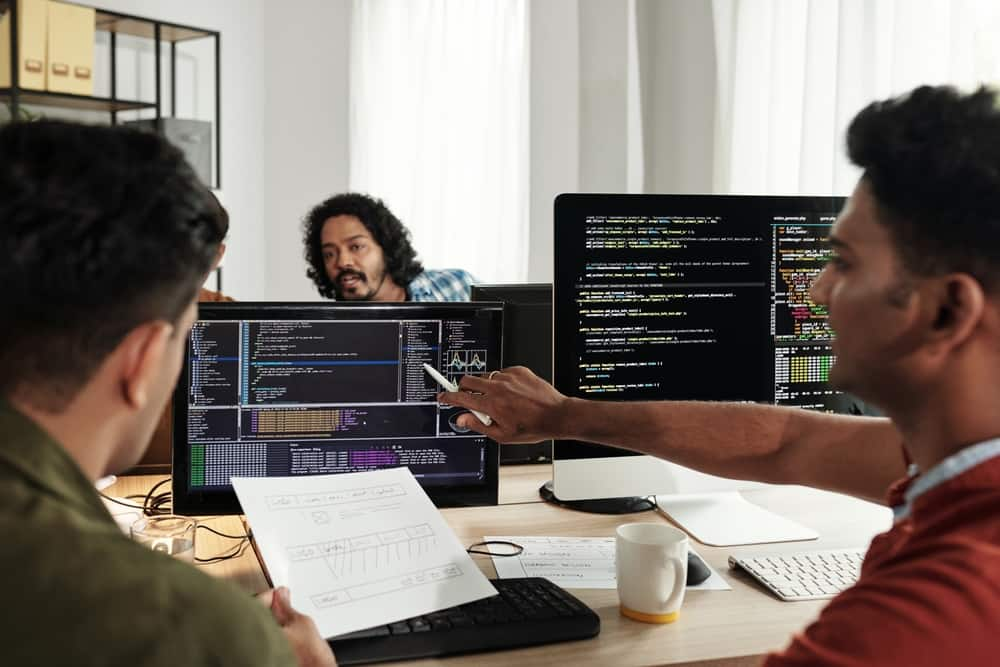5 Steps To Help You Kickstart Your Journey In Coding
Technology has visibly penetrated almost every aspect of lives today. What unites all forms of technology is the code that turns the wheel behind the scenes, be it in the applications on your phone, social networking websites, or your favourite OTT platforms. Learning to code is, therefore, a good way to breathe life into a lot of your ideas. This article will serve as a step-by-step guide on how you should go about exploring coding basics for beginners.

#1: Begin With Basics
Most people foray into the world of coding for beginners by writing something called a “Hello World” program. You can pick up a simple language like GW-BASIC/QBasic and just search for a tutorial, to be able to display a simple line of text called “Hello World” on the screen. You can then play around with it and learn to print your name, perform basic mathematical operations using code.
Why do we pick GW- BASIC/QBasic and not a more fancy language like Python/C/C++ ? For coding basics for beginners, it is quite similar to English and the ease of writing makes it a good stepping stone to move onto something more complex.
#2: Move To Python, C, C++
Once you have some grasp and comfort around or programming language like GW-BASIC/QBasic and can do coding for beginners, you can level up to a slightly more complex one, as most concepts remain similar across all languages. You can pick either Python or C++ . A lot of schools have C/C++/Java as a part of their curriculum as well. There are a lot of free courses available on websites like codeacademy , which can help you develop familiarity with basic programming languages.
Begin Solving Intermediate Problems
After getting a good grasp over coding basics for beginners, evntually, you may move onto solving some intermediate problems like pattern printing (which will give you a good grasp of loops) or try to pick a small project like a simple library management system. Picking projects which need more than one task to be solved shall give you a more hands-on chance to put to use what you’ve learnt so far. You can also try to pick up projects involving ideas that you are already familiar with, like a tic-tac-toe game, a calculator, or a calendar to show the month and highlight the date.
You can start learning coding as a tool for any of the tasks that you have been doing manually until now. For instance, you can use code to maintain a to-do list of homework/tasks that you are working on.
 You Can Learning Coding As A Tool For Tasks That You Have Been Doing Manually Until Now
You Can Learning Coding As A Tool For Tasks That You Have Been Doing Manually Until Now
Also Read: How Important Is It For Your Child To Learn To Code?
#3. Apply Programming
While the languages we just discussed can help you code and perform tasks, you can start learning coding better using HTML which can help you create websites or visual layouts involving different elements, colours, and styles. HTML should be used with an additional tool called CSS. If you right click on any website and select ‘view page source’, you will see a bunch of code using these two tools.
Try Creating A Personal Blog | A good entry-point would be to try creating a personal blog using WordPress and experiment with one of the free HTML layouts. This would prevent you from worrying about how others on the Internet would find and see your website, or ‘hosting’ the website, since WordPress would already be doing that for you. This should get your hands dirty without rummaging through the dark.
Get Familiar With Javascript | One aspect to note here is that while HTML and CSS can help you with the visual elements of a website/application, a language like Javascript helps you make your app/webpages more interactive.
Create Interfaces For Basic Needs | Once you are fairly comfortable with writing HTML code and using CSS to style a website, and also have some experience doing basic coding for beginners or tasks in Javascript, you can try to create interfaces for some of your personal needs, for instance, a website where you can add your notes from school and have other people download them.
#4. More Advanced Concepts
Post developing some familiarity with an interface developing language (HTML/CSS) and a generic programming language (Python/Java/C/C++ ), you may move on to learning more advanced concepts in programming around data structures (a particular way of organising data in a computer so that it can be used effectively) like arrays, stacks, queues, and linked lists.
Check Out Competitive Programming Websites
Just learning these advanced concepts theoretically might not always help and you might want to put all this knowledge to practical use. You may check out websites like codechef.com/spoj/codeforces which have problems tagged around varying difficulty levels and topics and help you in your journey of coding for beginners. They keep organising contests for school children, which give you a taste of how to start learning coding to solve puzzle-like problems. Such websites help you develop problem-solving skills and first-order thinking, which are crucial skills. These websites are often referred to as competitive programming websites or online judges and come in handy for students who eventually want to train for competitions like the International Olympiad For Informatics (IOI). Even if you do not intend to train for competitions, you may take it like a sport for your brain.
#5. Participate In Hackathons
Another way where coding can be put to use while being in school is participating in hackathons, which provide collaborative environments to solve some challenging problems and learn through the process. Some popular hackathons for school students include the ‘Smart India Hackathon’ and ‘Google Code to Learn’. Hackathons could be organised locally in your city as well. Such competitions give you more exposure around using coding to solve real-world problems and might end up giving you your reason for getting into software, eventually.
Hackathons mostly have some cool prizes to offer to participants.
You may use this as a guide on how to start learning coding and what to start with, how to continue on the journey and keep upskilling using a mix of real-world problems, your own pet projects, competitions, and puzzles. You can pick a combination of these or a single tool depending on your areas of interest and the time on your hands. Learning to code will help you discover and learn a lot more about computer science as a field and appreciate the nuances behind the apps/websites/tools you use on a daily basis more.
Deboshree holds a BTech in Computer Science and Engineering from BIT Mesra. Backed with 6 years of experience working with Goldman Sachs and Walmart, she currently works with Cred as backend engineer.
Upcoming Exams
Application Date:11 November,2024 - 08 April,2025